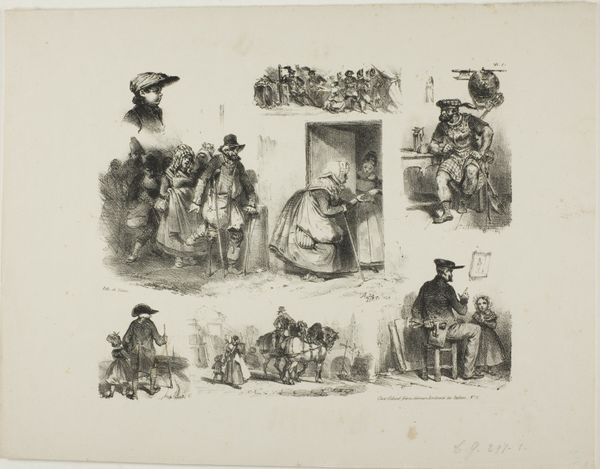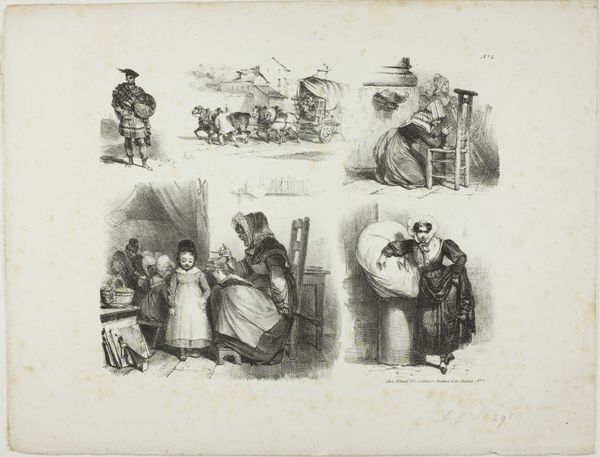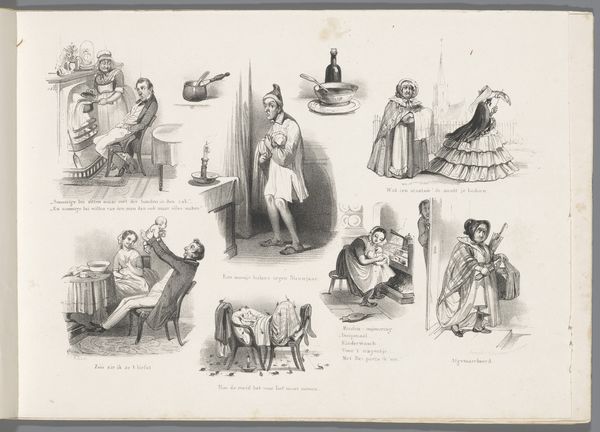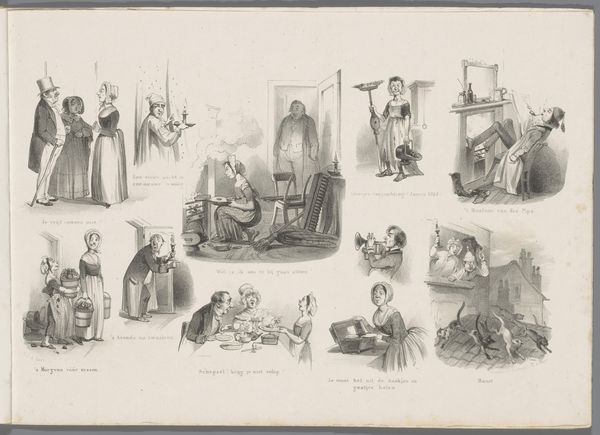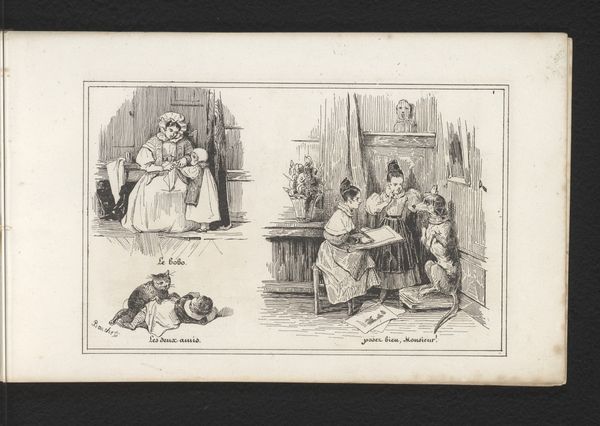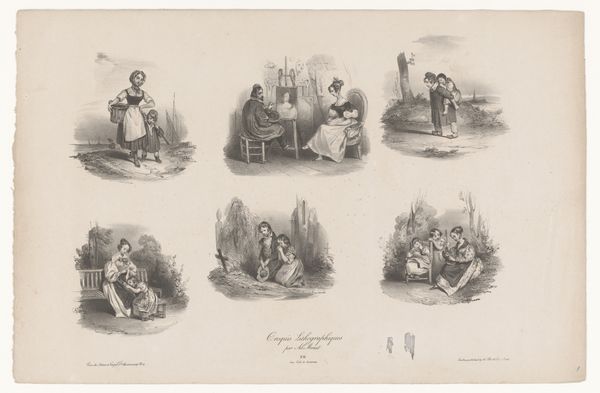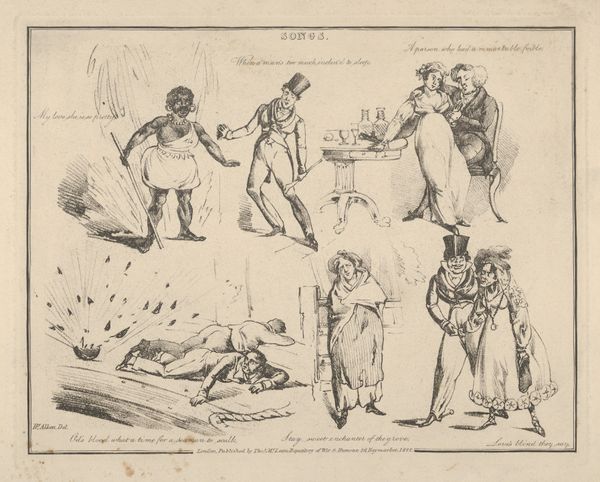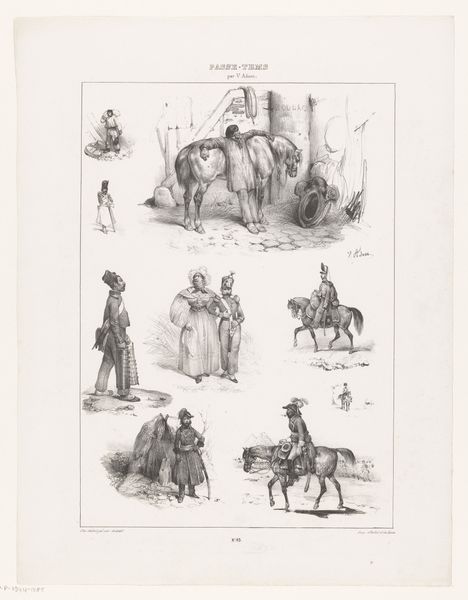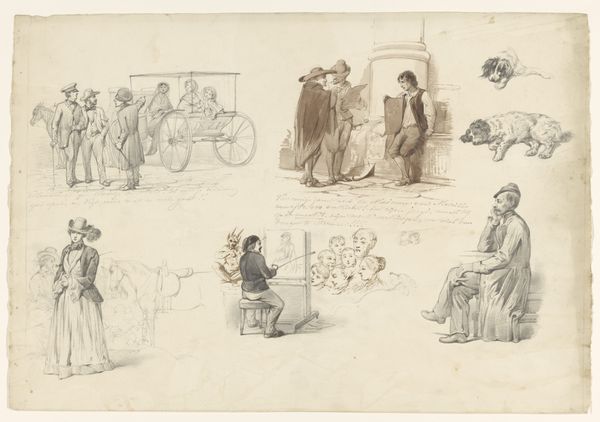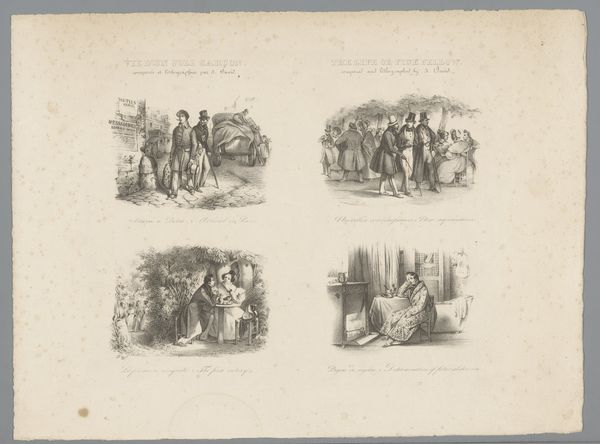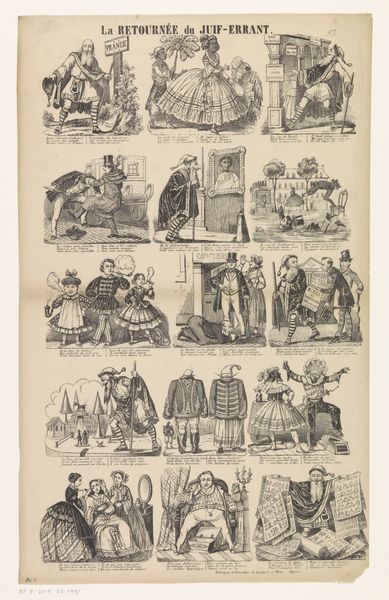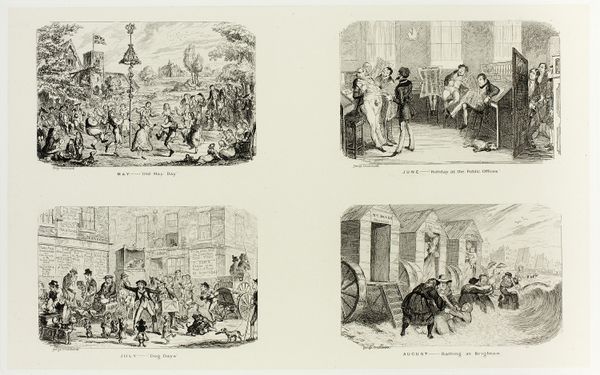
drawing, lithograph, print, etching, paper
#
drawing
#
narrative-art
#
lithograph
# print
#
french
#
etching
#
paper
#
romanticism
#
france
#
genre-painting
#
history-painting
Dimensions: 202 × 274 mm (image); 255 × 340 mm (sheet)
Copyright: Public Domain
Editor: This is "Sheet of Sketches" by Auguste Raffet, dating back to 1828. It’s a lithograph on paper. I'm struck by how Raffet packs so many different scenes onto one sheet. What can you tell me about it? Curator: Looking at this from a materialist perspective, consider the implications of lithography in 1828. It’s a relatively new printing technique that allowed for mass production of images, making art more accessible. Raffet is using this technology to circulate sketches, essentially glimpses into everyday life and historical moments. Who was this art for? Editor: So, it's about the democratization of art through printmaking? I see scenes of children, soldiers, and what looks like everyday townspeople. Curator: Exactly. And consider the social context. The Romantic era was fascinated by both the ordinary and the dramatic. Raffet uses the lithograph to capture slices of life across social strata. How does the materiality of the lithograph – the reproducible nature of it – speak to these themes? Does the method speak to the subject? Editor: It’s interesting how this technique allows for the broad dissemination of his artistic observations. Almost like early photojournalism? Is he commenting on French society and its values through the mass-produced medium? Curator: Precisely. He’s exploring French life using a technique that, by its very nature, aims for a wide reach. Notice the sketches are printed on paper, an inexpensive resource, not gilded frames for wealthy elites, for example. It democratizes not just the image, but also access to the art world. The chosen process reflects and reinforces the scenes being depicted. It begs the question, how is it we value "art" now compared to the audiences and social landscape Raffet had to navigate? Editor: That gives me a totally new perspective. I was just looking at the scenes, but now I see the printing process as integral to the meaning of the artwork. Curator: Understanding the production unveils a whole world about consumption, audience and artistic labor during the Romantic era. This shifts how we attribute value to the artwork, and how its purpose extends past a single owner and gallery space.
Comments
No comments
Be the first to comment and join the conversation on the ultimate creative platform.
